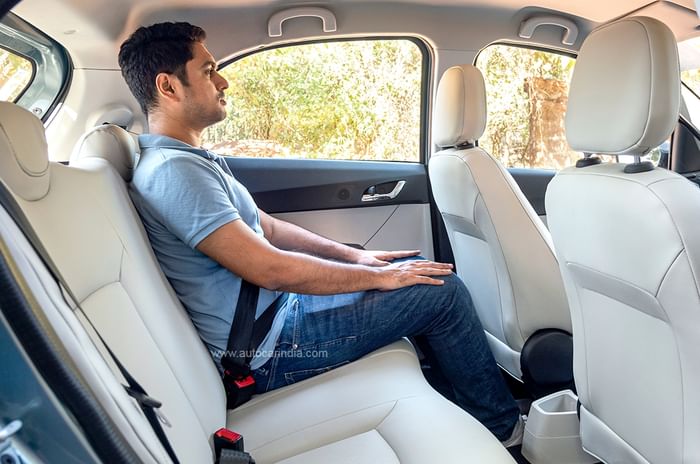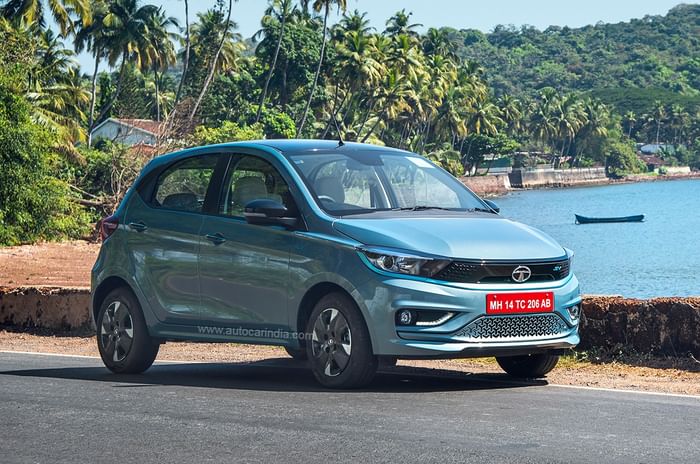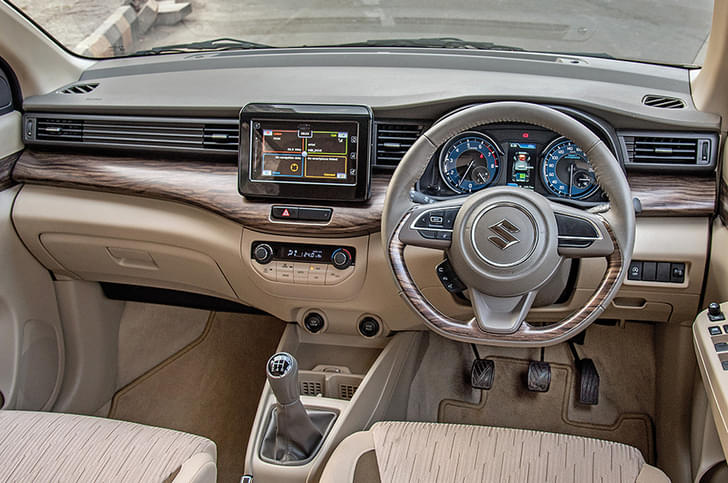After dominating India’s electric vehicle (EV) space with the Nexon SUV and Tigor sedan, Tata Motors has now turned its attention to hatchbacks and introduced the Tiago EV. It’s based on the same platform as the internal combustion engine (ICE) version, and thus, shares a high percentage of parts and components, benefiting from economies of scale. As a result, it arrives with a mouth-watering introductory price range of Rs 8.49 lakh-11.79 lakh (ex-showroom). However, this price was applicable for the first 20,000 buyers, and now that bookings have surpassed this number, prices will be hiked by Rs 30,000-35,000 across the board. Does that still make it a great deal?
The Tiago EV is available in two versions – MR (Medium Range), which gets a 19.2kWh Lithium Ferrous Phosphate (LFP) battery that’s mated to a 61hp electric motor with a claimed range of 257km; and the LR (Long Range), which uses a 24kWh LFP battery mated to a 75hp electric motor with a claimed range of 315km. The MR is available in two trims – XE and XT – with the latter being more popular. The LR accounts for a majority of bookings and is offered in five trim levels.
Tata Tiago EV: exterior
As mentioned earlier, the Tiago EV is based on the ICE version, albeit with some EV-specific styling touches, which are mainly concentrated at the front. The grille area sports a black enclosed panel with a ‘.EV’ badge; the humanity line, which underlines the headlamps and front grille, is now finished in blue as are the fog lamp surrounds; and the front air-dam features a neat tri-arrow patterned body-coloured encasing.
 Tiago EV gets stylish wheel caps.
Tiago EV gets stylish wheel caps.
All variants get two-tone plastic wheel caps, rather than alloys. It also features a black roof, black mirror casings as well as black lining on the door handles for a sporty touch. From the rear, you’ll identify the EV by the ‘Tiago.EV’ lettering across the tailgate. What’s amazing is that despite sporting a 2016 design language, the Tiago’s perfectly proportioned shape and clean-cut lines still manage to look timeless, and it comes across as a rather good-looking hatchback.
Tata Tiago EV: interior
While the Tiago EV retains the ICE version’s well-appointed interior, unique to the EV is an upmarket two-tone black and off-white theme, with light blue highlights scattered around. What really lifts the cabin’s appeal is the off-white leatherette upholstery with light blue stitching, although it will require special care to keep it spotless over time. Other EV-specific changes include new buttons for the braking regeneration levels and electric charging lid release – both placed beneath the touchscreen – as well as a rotary drive selector, similar to the Tigor EV.
 Digital instrument cluster carried over from petrol version, but gets EV specific readouts like range.
Digital instrument cluster carried over from petrol version, but gets EV specific readouts like range.
The digital instrument cluster, climate control, flat-bottom steering, seats, and more, are all carried over from the ICE version. Also carried over is the touchscreen, which feels too long in the tooth with tiny fonts and slow responses; on the other hand, its fantastic-sounding eight-speaker Harman system still remains best-in-class. The front seats are comfy, although snug for occupants with wider frames, and while the rear seat is quite supportive, headroom is tight for tall adults.
 Seats are comfy and legroom is good, headroom for taller adults will be tight.
Seats are comfy and legroom is good, headroom for taller adults will be tight.The good news is that, unlike other EVs, the floor height remains unchanged in the Tiago EV, so occupants seated at the back won’t be in a knees-up position. Even boot space hasn’t been hampered, and now measures 240 litres – two litres lesser than the ICE version. What’s missing is a spare tyre, but an electric air compressor and gel sealant are included instead, so users can temporarily fix a flat and drive to the nearest tyre repair shop. Quite a handy addition!
Tata Tiago EV: battery
We got behind the wheel of the Tiago EV Long Range (LR) version, which, as mentioned earlier, is powered by a 75hp permanent magnet synchronous motor (PMSP). It draws energy from a 24kWh LFP battery that’s placed in a split format in place of the ICE version’s fuel tank and beneath the boot floor.
 No frunk, engine bay space is taken up by motor and controller unit.
No frunk, engine bay space is taken up by motor and controller unit.
The 114Nm torque seems low for this electric hatchback, which tips the scales at about 1,155kg, with the battery itself weighing 220kg; compared to the Tigor EV, it’s 56Nm lower, but is also lighter by 80kg. To counter the torque deficit, the Tiago EV gets a shorter final drive gear and some software tweaks. There’s also a 320V architecture (vs the Tigor EV’s 350V system) that’s said to be more energy efficient.
Tata Tiago EV: range and performance
Interestingly, the Tiago EV gets two drive modes – City being the default drive setting, which limits torque to 75 percent; and the other being Sport, which unlocks the full potential of this motor. We’re happy to report that, even in the default drive mode, the electric motor delivers ample performance to keep up with traffic and tuck into gaps. While acceleration isn’t ‘electrifying’, it feels extremely smooth. With a linear throttle response, coupled with the motor’s ability to generate instant torque, it feels peppy in most urban applications. So it is likely to keep most owners satisfied with the way it delivers performance.
 Starting on a slope requires you to use Sport mode for a smooth and quick roll on.
Starting on a slope requires you to use Sport mode for a smooth and quick roll on.
The only bit you’ll miss is that sharp, off the line ‘electric’ response, which Tata says was intentionally blunted for a more relaxed roll-on in the interest of reducing battery drain. Also, while starting off on steep inclines, it tends to roll back about a foot or two before rolling forward. This is despite a full throttle, and even then there’s gradual progress. So, you’ll have to use the parking brake or just remember to use Sport mode as it unlocks the full 114Nm of torque; so rollback is minimal, and the ascent is relatively effort-free.
 Suspension irons out most of what the road throws up and handling is tidy too.
Suspension irons out most of what the road throws up and handling is tidy too.
While City mode feels extremely linear, Sport has enough poke to keep you entertained. In a quick test, we clocked 0-100kph in 14.72sec. Power delivery is expectedly smooth, and while the gradual roll on the mid phases is satisfactory, it only begins to taper as you approach triple-digit speeds and will max out at 120kph.
Like its EV stablemates, the Tiago EV gets three levels of energy regeneration while decelerating. It also gets level 0, which you should use on highways as regeneration is switched off, and the car will roll quite freely when you lift off the accelerator, thus covering more distance. Level 3, on the other hand, will see the vehicle decelerate rather aggressively (like you’ve pressed the brake pedal); so, it’s best to use when going down steep slopes where the speed will be controlled naturally and you’ll charge the battery too.
 On a 7.2Kw AC home charger, the 24kWh battery goes from 10 to 100% in 3.6 hours.
On a 7.2Kw AC home charger, the 24kWh battery goes from 10 to 100% in 3.6 hours.
It must be noted that the car will slow down to crawling speeds, but will not come to a complete stop even in level 3, so one-pedal driving isn’t possible. Being the Long Range version, it is claimed to deliver 315km on a full charge. However, in our real world range test, the Tiago EV returned 193km, in a mixed city and highway cycle. As per Tata, most Tiago EV buyers are likely to drive less than 50km daily, which means charging the vehicle twice or thrice a week should suffice. And speaking of charging, a regular 15A charger is said to fully charge the battery from 10 percent in about nine hours; using a 25kWh DC fast charger can do the same in about an hour.
 Tiago.EV lettering spelled out across the tailgate.
Tiago.EV lettering spelled out across the tailgate.
A highlight of the Tiago EV is its suspension, which feels mature and soaks up even the harshest of road shocks. The steering is light and has a tight turning radius, making light work of nipping in and out of gaps in traffic and parking in tight spots. The brake pedal feel isn’t as sharp as the regular ICE version’s and instead feels gradual, but it's easy to get accustomed to and has adequate stopping power. What could have been improved is the rotary drive selector that’s carried over from the Nexon EV Prime and Tigor EV. This system feels slow to respond, particularly while taking three-point U-turns and parking, often leaving drivers second guessing while toggling between ‘D’ and ‘R’.
Tata Tiago EV: price and verdict
With first-time car buyers constituting one-fourth of pre-bookings, the Tiago EV not only has to be a good electric vehicle, but it also has to do a good job of being an everyday car. As the latter, the Tiago has earned praises for its well-appointed interior, ample tech and equipment, and its solid build and safety credentials. Moreover, it drives in a mature manner, and with a light steering, good visibility and a small footprint, it is very user-friendly. And now with the electric powertrain, the Tiago has taken a quantum leap when it comes to smoothness, refinement and drivability.

Yes, performance isn’t electrifying and the drive selector is slow to respond, but the Tiago EV feels peppy enough for everyday driving scenarios, and with a real world range of 193 km, it comes across as an ideal city car. Finally, the Tiago EV is so well priced to begin with that despite a 3-4 percent price hike, it still makes for a fantastic deal. And for this reason alone, it could entice buyers to go electric.










































